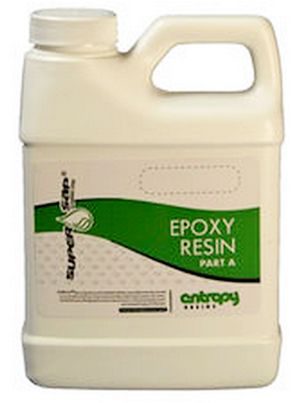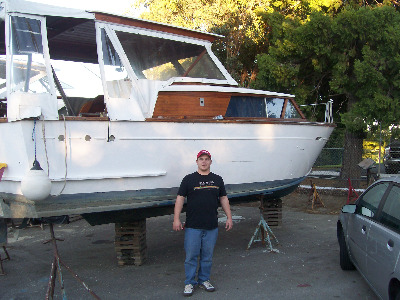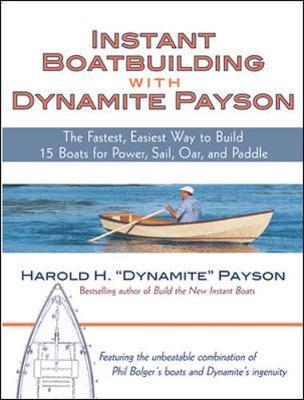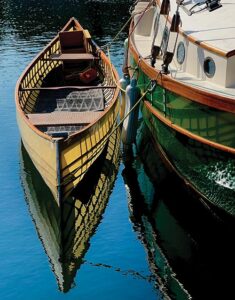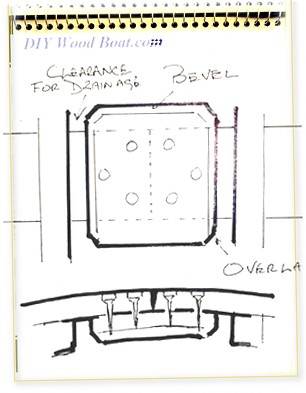- Home
- Boat Building
- Restoration
- Glue
- Applying Glass Cloth
- Epoxy Resin
Notes on Epoxy Resin
There is a bewildering range of epoxy resins on the market today.
So, which resins to use when building wooden boats?
There are two main types in use in boat building.
- The Polyester type which are the cheaper.
However, despite being used to build GRP boats they are not suitable for building with wood.
- Epoxy type resins have superior ability to bond to wood.
They are much less porous and have superior gap filling ability.
As with most things in life you get what you pay for.
Good quality marine epoxies are expensive.
The less you pay the more likely it is that the resin has been diluted.
Whether it’s been diluted with cheap filler or non solvent thinner it will reduce its quality.
Stick to (sorry about the pun) a good quality, well known brand of ‘marine’ epoxy, it’ll pay in the end.
affiliate linksCaveat
Warning
Epoxy Resins contain Bisphenol
A.
Before using traditional petrolium based epoxies you should consider
the flood of new scientific
evidence on adverse effects of BPA.
Before we get carried away with how wonderful epoxies are we need to bear in mind that there are some and there is a growing concern among the scientific community about the adverse health and environmental risks of traditional petrolium based epoxies.
- Epoxies are hard therefore brittle. There are additives which will make them less so but these will reduce their other good points. So it is best not to use them on anything which needs to flex, such as sheathing a carvel boat.
- They will deteriorate under prolonged exposure to UV light (sunlight). Even clear epoxies will yellow. So they will need to be over coated.
- As they cure a waxy coating (blush) will form on the surface. This needs to be completely removed before over-coating with anything. Nothing will stick to the wax.
- When over-coating with another layer of epoxy this is best done after hardening but before it has fully cured.
- Any contamination of the wood such as oil, wax or moisture will prevent the epoxy soaking in. This can result in the coating peeling off.
- Before planning a big project involving epoxy resin make sure that you are not allergic to it.
- It never used to bother me but I now find that while I’m ok doing small jobs, prolonged exposure leaves me with a skin rash and I have occasionally felt quite ill.
Amine Blush
After application and during the curing process, epoxy resin releases a wax-like’ film onto the surface called ‘Amine Blush’.
This amine blush will prevent subsequent layers of epoxy and other products fully adhering unless removed properly.
The best way to reduce blushing is to work in warm temperatures (the epoxy sets up fast, reducing the blush window) and with humidity at low levels.
It would be best to avoid conditions where moisture is coming out of the air as temperatures fall.
Amine blush is water soluble so, thoroughly washing the cured epoxy with clean warm water, soap, and a stiff brush or Scotch-Brite™ pad is the only way to completely remove it.
Sanding before removing the amine blush may sand the blush deeper into the surface making it much harder to remove.
Even those products labelled as ‘amine blush free’ or ‘no blush formula’ are best washed.
Solvents like Acetone will not remove the blush.
If there is a good reason not to get your project wet, you can use West System’s “Peel Ply”.
Peel ply is a finely woven nylon fabric that will not bond to epoxy, however, the amine blush forms on the peel ply, not on your cured epoxy.
Simply follow the instructions to apply peel ply, ensure that the peel ply is thoroughly wetted out, let your epoxy cure and then remove the peel ply once cured and before applying the next coating, the blush will have formed on the peel ply not on the epoxy below.
Another advantage to using peel ply is that it’s fine woven pattern is impressed into the epoxy coating, creating a ready to bond to, graded, textured surface.
Mixing
All epoxies
come in two
parts, the resin and a hardener
(curing
agent).
Mixing
ratios will vary
from one product to the
next.
- It is always best to stick to the recommended ratios. However curing times can be altered by altering the ratio. But beware some products are less forgiving than others.
- Mixing must be thorough.
- The working time (pot life)is the interval after mixing during which the epoxy can be applied. This will vary according to the product used.
- Only mix the amount that you will have time to apply during the ‘pot life’.
- Make sure you have all the components, tools, etc ready before mixing.
- At the end of the ‘pot life’ the mixture will begin to get warm and can become dangerously hot. Be careful especially if using plastic mixing pots.
- Although the epoxy will ‘harden’ quite quickly the actual ‘curing’ can take days before full strength is attained.
- Most epoxies are best used when temperatures are between 15C (60F)and 25C (80F) and when humidity is low.An increase in the temperatures will reduce the working time but will thin it making it easier to spread.
Thickening
There
are numerous epoxy resin thickeners which are available commercially,
such as micro balloons, talc, silica and the like.
Most are strong and sand easily and are available in a range of colors.
You can use sawdust or even white wheat flour.
I have heard of pulverised limestone and Portland cement being used successfully, however these must be a bugger to sand.
affiliate linksGlass Cloth
A layer of fiberglass cloth is used to add a high degree of protection, strength, abrasion and impact resistance. There are a number of different forms.
- Chopped glass strands, these are low cost adding bulk and stiffness but not much strength.
- Woven and knitted cloths where the strands are aligned to give multi-directional strength
- Unidirectional cloths where the strands are mostly aligned in one direction to give longitudinal strength.
- These are available in varying sizes from tape to sheets.
Tips on Applying Glass Cloth. >>>>>
affiliate links
Underwater
There are some specialist epoxy resin coatings which can be applied to damp and saturated surfaces and even underwater.
There are also underwater epoxy putties which can be used for emergency repair work.
affiliate linksEpoxy Resin Safety
Epoxies present more health and environmental risks than any other boatbuilding materials.
- While the manufacturers of epoxies seem to prefer lay persons such as myself not to have access to the latest scientific findings, some of the concerns can be about Bisphenol A can be read here. Apparently it is the hardeners which are the main cause for concern.
- It is best to avoid any skin contact with the material.
- Use disposable gloves.
- If you do get any epoxy resin on your skin wash it off as soon as possible.
- Use a proprietary hand cleaner rather than a solvent.
- Vinegar can be used as a cleaner rather than acetone.
Entropy Resins
Entropy Resins are made using a plant-based epoxy called "Super Sap" instead of petroleum based products.
Not only is “Super Sap” resin is sustainable but you can apply without fumes so there is no need to wear a respirator.
Environmental benefits include bio-based content sources and a reduced carbon footprint.
“Super Sap” uses a pine pulp based resin sourced from by-product of paper manufacturing processes and plant based byproduct from bio fuels processing.
It's relatively low viscosity and great adhesion to all substrates makes it an excellent composite laminating resin.
Some products even feature air release additives that allow for smooth brush on coatings.
Previous posts
See What Others Have Posted
Kudos on safety warnings
As a sufferer of a rare chronic, auto-immune condition.
I applaud you for your cautionary warnings.
Our bodies accumulate toxins over time.
The …
Nice web page about building from free plans and cheaper epoxy.
Check this web page, it explains how to use today's materials with old plans:
http://boatbuildercentral.com/howto/oldplans1.php
It's 6 or 7 pages …
Dalchem
I think epoxy is fine but I'm not an expert.
You may ask and check out Dalchem.
I usually get my supplies from them http://dalchem.com.au/product/casting-material …
Epoxy Removal from Skin
I have been reading comments on Sailing Anarchy that Acetone is a good means to remove epoxy as it is naturally produced by the human body.
I have …
Glassing an Antique Woodie Hull
I have a 36 footer with pickled engines that I am pulling.
I plan to pull all the below water hardware, fill the holes and glass her over adding outboards …
La hookah
My trimaran suffered some damage and I have someone fixing her.
Should they use epoxy and resin to fare out the damaged areas to meet the undamaged …
